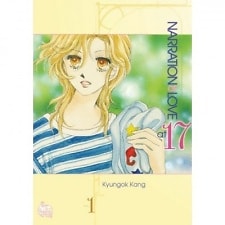Nov 23, 2012
Seyoung is easy on the eyes, but she isn’t a knockout. She’s logical, but she doesn’t always get the best grades. And she’s skilled, but not overly talented. Seyoung is a person, to say so in the least, but throughout the series it becomes clear that she never wants the word “normal” in front of it. If there is a future that cannot be known, how could you say an individual is “normal”? If there are endless amounts of possibilities and futures in this world, then how do you know you wouldn’t be “different”? In the eyes of Seyoung, an existentialism-angsty teenager, she faces the
...
the world with two, contradicting philosophies: free-will and fate. Is the tangible world (or intangible relationships) governed by our choices, or coincidence alone? And where does Seyoung fit into the bigger picture?
“Like this, I am in the middle of life, where there is no beginning or end. Identical days, yesterday is like today, today is like tomorrow. Everything will somehow keep on going. But sometimes, there will be things that end. I’ll soon end my 17th year and turn 18. Soon.”
Narration Of Love At 17 is something very peculiar. At first glance, it is a very poor story consisted of no definite plot, however, it’s deep undertones live up to the title. There will be a day where you ponder the meaning of life and existence, and for Seyoung, it is when she is 17. It is one of first manhwas Kang Kyung Ok has ever written, but looking at her other titles, you can see that she has taken a big step outside of her comfort zone. This is a philosophical/slice-of-life manhwa, and unlike her others, it does not rely on an elaborate story to pull the plot along. It is an incredibly honest portrayal of an ordinary person who just so happens to be 17.
Firstly, I would like to say that Seyoung is one of Kang Kyung Ok’s finest characters: a person so normal suffering from the “I Just Want To Be Special” trope. Her persona as a ‘normal teenager’ is portrayed so accurately through many characteristics that are true to her age: insecurity, passion, immaturity, indecisiveness, and (most importantly) naivety. She has a one sided love, a best friend, a rival --and yet Seyoung’s relations always feel genuine and non-cliche. And she, just like any other teenager, is quick to make new social groups (which is where the story begins). Seyoung has no real character development, seeing as there is no obstacle in this story she must overcome, but she is a very solid character just by existing. Through her, Kang Kyung Ok expresses so many human sentiments. The supporting characters, however, are very bland, and aren't as fleshed out as Seyoung is.
The pacing in this was incredibly slow, somewhat sombre and dull. As I said, there is no real meaty-plot to this manga, but it just chronicles Seyoung’s 17th year. It began as something awkward and tedious that screamed ‘teenager’, but it slowly transforms (no, not works up) into a prose-heavy coming-of-age story. The narration, too, was wonderful, cutting into the prose with heavy realism (something that makes it even more pragmatic and thought-provoking!). There were some flaws concerning the narration in some lighter scenes, but it truly shines Seyoung is self-reflecting.
The atmosphere is never really clearly set; it goes from seriously dull, to invigorating, to melodramatic, and then to mystic. This might relate to how Seyoung is inconsistent with her moods, but they sometimes feel out of place. I also found that the setting wasn’t effectively used to it’s full potential, as there weren’t many panels with a full landscape. When the atmosphere and setting were used simultaneously and to their entire ability, it was prime. But when it wasn’t, the manhwa felt clumsy and lazy.
And I don’t rate on art, but it is something I must discuss. It was a manhwa made in 1991 --I wouldn’t expect a super-conventional art style. In fact, Kang Kyung Ok had such fondness for 70’s shoujo, her artwork and style is similar to Hagio Moto/Takemiya Keiko’s. Kang, however, doesn’t have the experience/refinement the two shoujo pioneers did, and her art can look extremely androgynous and even unappealing. The characters bodies can also look gawky and unskilled sometimes. It can hinder the reading experience, depending on how much importance you place on artwork.
So Narration Of Love At 17 was good, and in the end, it stayed true to it’s title (a narration being a message that tells the particular course of events). I would have loved to say that it was 'great', but there were obvious flaws concerning the atmosphere and setting. Seyoung, however, was incredible at being an accurate portrayal of a teenager, and her relations were realistic. Kang Kyung Ok's unique way of story-telling is refreshing, and different from other shoujos concerning a teenage girl. But because of the amount of noticeable flaws, I’m only going to give it a 7.5 / 10.0. If you feel up to reading a different shoujo, then look no more.
“But I am only 17 years old. And yet...”
(I also recommend either buying this online, or in paper-back copy because the bad, public translation can really hurt the reading experience.)
★★★★★★★☆☆☆
Reviewer’s Rating: 7
What did you think of this review?
Nice
 0
0
Love it
 0
0
Funny
 0
0
Confusing
 0
0
Well-written
 0
0
Creative
 0
0Show all

 (1).png)

















